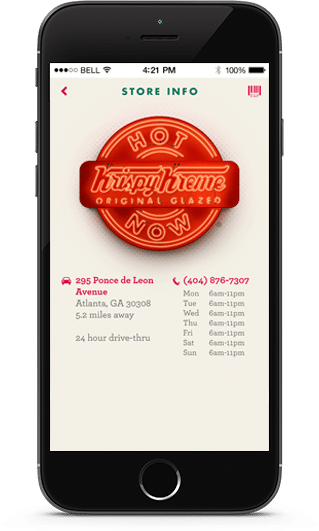The 2018 fast food consumer trends the QSR industry must prepare for
One thing is going to reign supreme for the quick service restaurants (QSR) industry in 2018, and that’s the need to compete with sit-down locations. These full-service restaurants are beginning to expand into places primarily controlled by QSRs in the past. While consumers have tended to choose fast food for its ability to deliver in a hurry, now even full-service locations are ramping up the speed with offerings like mobile ordering and home delivery. In response, fast food consumer trends in 2018 are going to be about QSRs delivering higher quality experiences, while continuing to provide value and speed.
Technology will be a major driver of QSR marketing strategies for 2018, as it helps QSR companies provide a better customer experience within the restaurant and offer more personalization. In addition, we may find that fast food brands begin offering experiences more similar to sit-down restaurants. As technology begins to do some of the heavy lifting, QSR brands could have more opportunities to improve the customer experience for their target markets.
Consumer Trend #1: Renewed Focus on Value
It was once believed that fast food was recession-proof, but that’s not the case anymore. Consumers are more knowledgeable than ever, and with that knowledge comes price consciousness. Through 2015 and 2016, the cost of eating at a QSR location went up by 6%, while the cost of preparing food at home dropped by 0.7%. As this gap further widens, consumers will notice and are likely to choose to eat at home.
On top of that, single Millennials, one of the largest QSR target markets, actually prefer to either cook at home or order out from full-service restaurants. While consumers are more focused on value, brands are challenged to deliver. However, there are ways to address these issues.
Focus on families:
While single Millennials tend to have more disposable income—which may be why they choose more expensive full-service restaurants when dining out—families continue to focus on value. QSR brands should look to families when expanding their market share.
Embrace automation:
Rising labor costs make it difficult to reduce costs. Some automation options, like mobile ordering and digital wallets, could reduce the need for cashiers. In addition, self-service kiosks can cut labor costs while drawing in value-focused customers.
Pare down menus:
QSRs may find that the best option for reducing costs is to pare down menus significantly. This was a strategy Wing Zone focused on last summer when they closed large locations in favor of smaller ones and also reduced the number of items on their menu. The brand was able to cut back operating costs, freeing up funds for mobile ordering platforms and for delivery driver retention.
By reducing operating costs through streamlined menus and labor automation, QSRs are better able to deliver value to customers. At the same time, reduced lines and faster operations gained by automation can be used to improve the onsite experience.
Fast Food Consumer Trend #2: Better Onsite Experiences
As they begin to compete with full-service restaurants in the offsite experience, fast casuals need to put more focus on the onsite experience. Chick-fil-A is a great example of a successful customer experience strategy, and they have a very loyal fan base to show for it. In fact, it’s estimated that 10 to 15% of Chick-fil-A customers are considered brand ambassadors. A big reason for this is the QSR’s onsite experience, which includes:
Fresh flowers on tables:
The brand places fresh flowers on all tables, which creates a higher end feel at a minimal cost.
The language of luxury:
It may seem like a small thing, but Chick-fil-A employees are trained to say “my pleasure,” rather than “you’re welcome” when a customer thanks them for taking an order. The idea is to treat the customer as if they are at a luxury establishment.
Greeting visitors with care:
During a rainstorm, it’s not uncommon to see a Chick-fil-A employee holding an umbrella for a customer who is either entering or leaving a location.
Table service:
Anyone who has dined at a Chick-fil-A has likely noticed there is at least one employee in the dining area at all times, checking on customers, refilling drinks, and discarding trays, which offers an elevated feel.
All of these steps from Chick-fil-A are more commonly seen at full-service restaurants. In implementing them at the QSR, Chick-fil-A is able to offer customers the personalized feel of full-service, but at QSR prices. The QSR customer experience at Chick-fil-A feels high-end but is really only a few low-cost tweaks that help elevate the experience for customers. All these touches improve the perception of quality at Chick-fil-A locations, which encourages repeat visits and customer loyalty.
Consumer Trend #3: Quality Ingredients Beat Healthy Options
The healthy trend isn’t as lucrative as you might expect. Instead, it seems that consumers are more focused on quality of ingredients over healthier menu items. For example, a consumer might choose to eat a breakfast burrito with cage-free eggs over a fruit plate, even though the fruit plate is lower in calories. The numbers back this up, too: In one study, fast food brands that rank highest for ingredient quality grew 10 times faster than brands that ranked high for healthier options.
Essentially, consumers are prioritizing quality over calories. They want to indulge when they eat out, and they want to indulge on higher-end food, even at fast-casual locations. To capitalize on this trend, brands can:
Emphasize locally grown ingredients:
When a QSR sources any of its products from a local producer, this is a good marketing opportunity. Consumers see locally grown food as fresh food, which increases the perception of quality.
Eliminate artificial ingredients:
When McDonald’s, which generally didn’t have the highest public perception when it came to quality, moved away from using certain artificial ingredients and preservatives, the result was improved perception of the brand. After announcing those changes nationwide, the brand reported an average overall increase in same-store sales of 2%.
Build a better presentation:
Many brands have improved their packaging to create a better-looking product. This may mean switching from wrappers to cardboard containers, and offering carryout bags with handles rather than a traditional paper bag.
Basic tweaks can improve quality and create a better brand experience for consumers. This can make a QSR feel more high-end, which can gain consumer attention during those moments before they make a purchase decision. Another thing giving QSR brands a more high-end feel is the increased use of technology in both marketing and in the ordering process.

Fast Food Consumer Trend #4: Merging Traditional Advertising with New Media
Word-of-mouth marketing is among the oldest forms of marketing, and brands have long depended on customers to spread brand awareness. However, this has taken on a new meaning in the age of social media. Word-of-mouth becomes a lot more impactful in online communities, which is why Krispy Kreme has leveraged it to improve sales.
Krispy Kreme got its start using word-of-mouth advertising, then segued that into a strong social media presence. The brand is known for its ability to cultivate brand ambassadors by inviting popular bloggers who are fans to tour the facilities. This created a connection with these bloggers, and drove them to want to help the brand gain followers.
The company also updated their traditional ‘hot light’ to the digital age. An iconic part of the brand, the hot light was lit at a location whenever glazed donuts were fresh from the oven. Now, consumers can track that hot light via the Hot Light App, which notifies users when a Krispy Kreme location near them turns on the light.
The brand merged several parts of its seminal advertising, and incorporated that advertising into the digital space. In so doing, they gained new customers without losing elements of the marketing that made the brand iconic. Of course, the integration of mobile marketing played a major part in this.
Consumer Trend #5: Increased Need for Mobile Integration
Technology is becoming a major part of the QSR industry. In fact, 25% of consumers report that the availability of tech figures into their decision of whether to visit a specific QSR location. That number is only going to grow, which is why companies should seek ways to use technology at their locations. A few options include:
Menu browsing:
About 31% of consumers report they’ve used a mobile phone to browse a menu in the past month. As consumers are increasingly turning to their mobile devices, QSR brands should find a way to capitalize on this trend.
Mobile payments:
Millennials are a big fan of mobile payments, with one-third of them expecting restaurants to offer the technology. Mobile payments expedite the checkout process too, as consumers can pay for their meal before they even arrive at the location.
Shopping apps:
Consumers usually decide to visit a QSR spontaneously, which is why you can leverage micro-moments through shopping apps. Consider the case of a consumer who is grocery shopping and decides they will stop by a QSR to pick up dinner on the way home. If that consumer is using a shopping app, they may check the app to see if they can take part in a rewards program for visiting a specific or nearby QSR location. If your brand is the first they see, it’s likely that you’ll gain their attention long enough to get the sale.
Onsite entertainment:
Many brands are using technology to entertain their onsite patrons. This includes options that range from free WiFi to tableside tablets for playing games—and learning about the brand. This is a great tool for family-focused chains in particular, as it can keep patrons in the location longer, increasing the likelihood they’ll order more.
Brands need to find ways to integrate mobile into their marketing mix, as it’s becoming a part of the QSR experience consumers have come to expect. Mobile can be used to bring consumers to your location, and to improve customer engagement while they’re dining.
Mobile also works in creating the higher end experience that QSR customers are seeking. You can use mobile to take a quality-focused approach with your ads and make the ordering process more convenient for customers. Offering mobile payments can free up personnel, who can then focus on providing a better experience for consumers. You can reach out to value-focused consumers through shopping apps, such as Shopkick, allowing them to gain rewards just for visiting your location, without having to offer immediate discounts just to get their attention.
Mobile is your way of tying together the 2018 fast food consumer trends that are going to impact your bottom line. Through 2018, the QSR sector is going to get faster, and customers are going to demand more. Mobile can be your way of delivering a higher end experience that allows you to compete with full-service locations while still offering value. It also allows you to travel with your consumers, so when they do decide to stop at a QSR location, yours is the one they choose.
Shopkick is a shopping app that helps our partners provide the mobile experience consumers are looking for, while minimizing the cost when compared to creating a full scale, proprietary mobile program. If you’d like to use Shopkick to gain more attention from QSR customers, contact us.





